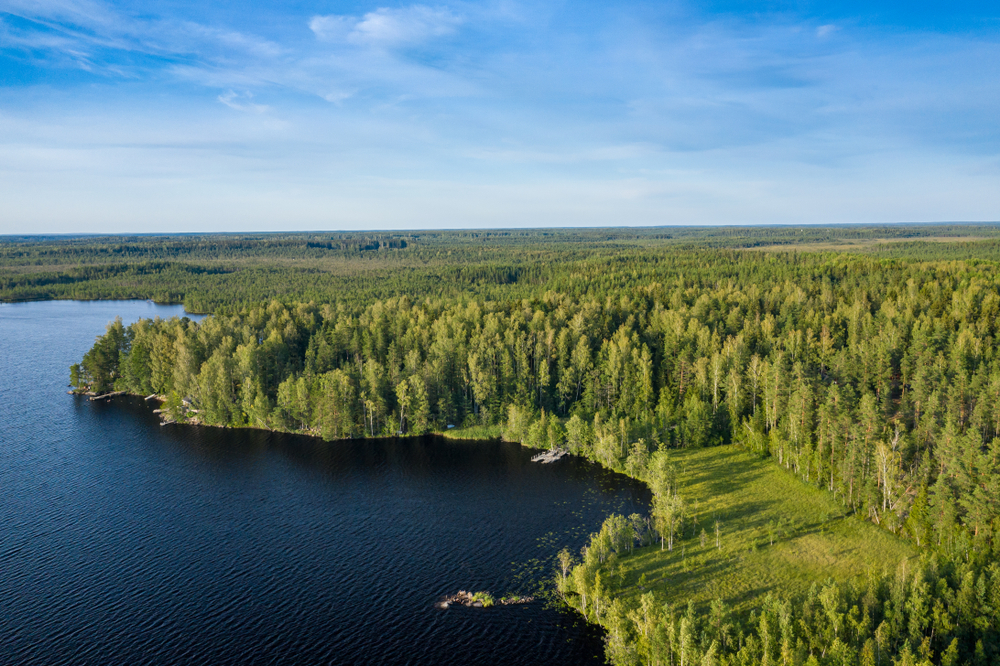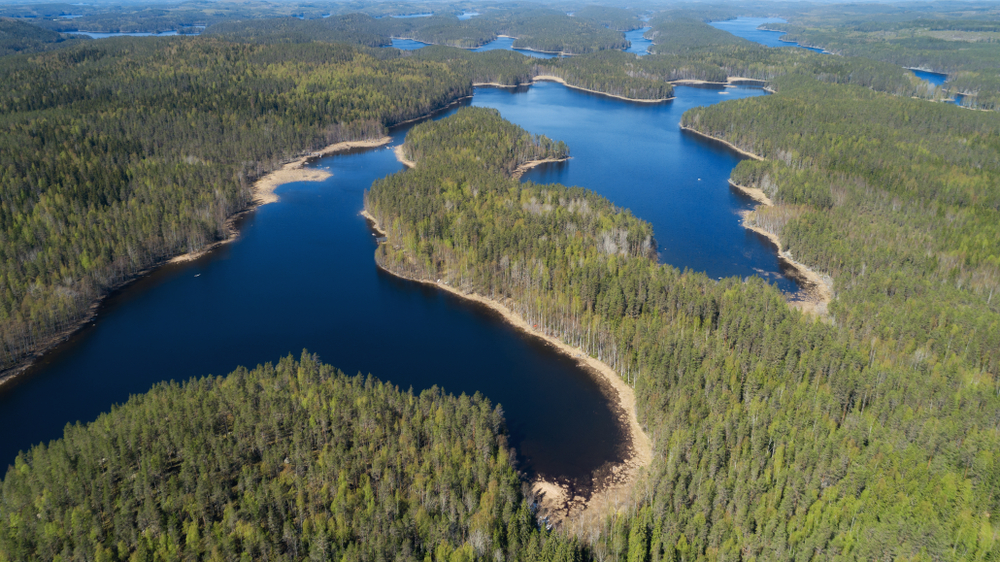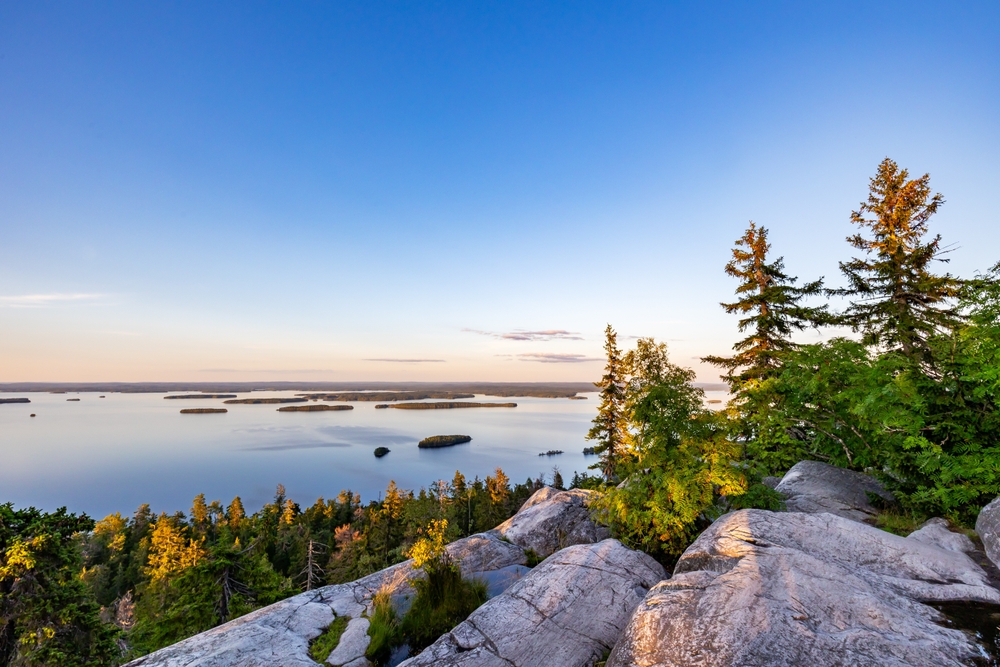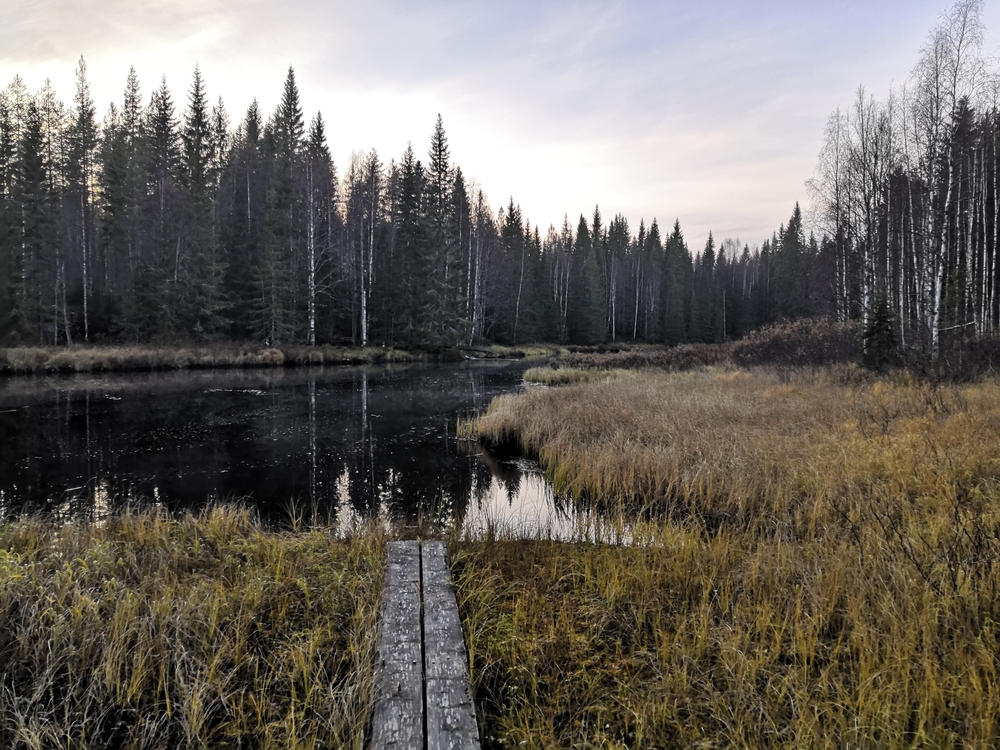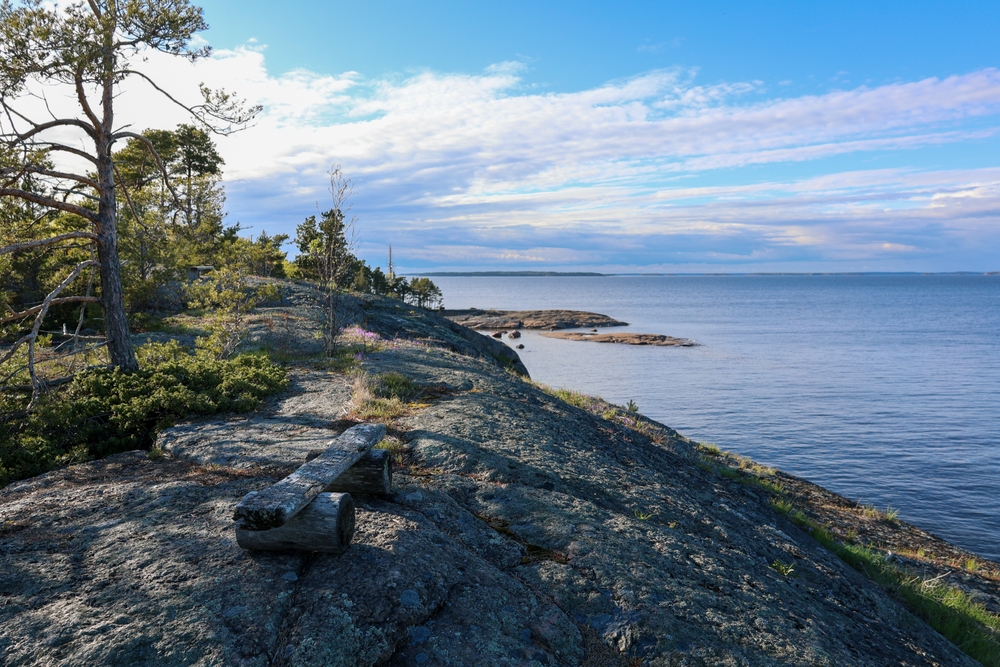Kurjenrahka Overview
Kurjenrahka National Park, known locally as Kurjenrahkan kansallispuisto, is a stunning natural reserve located in southwestern Finland, near the city of Turku. Established in 1998, the park covers an area of approximately 37 square miles (98 square kilometers).
It is an essential conservation area that showcases Finland’s vast boreal landscapes, with a mix of ancient peat bogs, dense forests, and pristine waterways. The park is renowned for its serene and untouched wilderness, making it a haven for nature lovers, birdwatchers, and hikers seeking an escape from urban life.
The park’s terrain is dominated by expansive raised bogs, particularly Kurjenrahka bog, which gives the park its name. In Finnish, kurki means “crane,” a reference to the many Eurasian cranes that migrate here during the warmer months. The bogs are interspersed with small lakes and ponds, which create a picturesque mosaic of water and land.
Surrounding the open marshlands are dense spruce and pine forests, as well as groves of birch that thrive in the wetter areas. Rocky outcrops and ancient glacial formations further define the landscape, giving visitors a glimpse into Finland’s geological history. The scenic Vaskijärvi Strict Nature Reserve, an area adjacent to the park, adds to the diversity of the terrain with its deep wilderness feel and stricter conservation protections.
Kurjenrahka National Park is home to a variety of wildlife species, with birdwatching being one of the most rewarding experiences here. The Eurasian crane (Grus grus) is the park’s most iconic species, and in the spring and autumn, visitors can witness large flocks resting in the bogs during migration. Other notable bird species include black grouse, golden eagles, woodpeckers, and various owls that inhabit the forests.
Mammals are also well-represented, with moose, lynx, red foxes, and roe deer frequently spotted within the park. The elusive wolverine has been known to pass through the area, though sightings are rare. Smaller creatures such as squirrels, hares, and voles are common, and a healthy population of frogs and dragonflies can be found near the park’s wetlands.
One of the most popular features of the park is Kurjenpesä, a well-maintained nature hut that serves as a rest stop for hikers. Several well-marked trails crisscross the park, the most famous being the Savojärvi Trail, a circular route that offers stunning views of the lake and bog landscape.
The Vaskijärvi Trail, which extends into the stricter nature reserve, provides a more challenging trek for those seeking a deeper immersion in the wilderness. In the winter, the park becomes a picturesque snow-covered wonderland, attracting cross-country skiers and snowshoers.
Kurjenrahka National Park is managed by Metsähallitus, Finland’s forest and park administration, which ensures its conservation while allowing sustainable recreational activities. One of the main conservation challenges is peatland drainage, which has historically threatened the region’s biodiversity.
However, restoration efforts have been successful in rewetting key areas of the bog to restore natural water flow and vegetation. The park also plays an essential role in educating visitors about the fragile nature of peatland ecosystems and the importance of preserving them for future generations.








































































